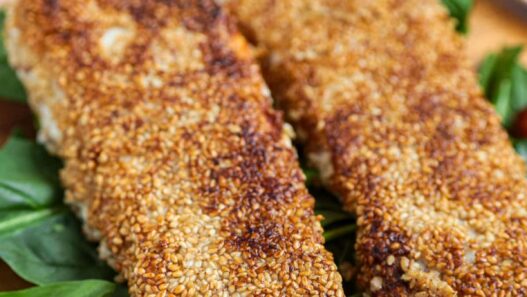You don't just arrive in Cusco – you feel it. In your lungs, your legs, and your senses.
The moment I stepped off the plane, I could tell this city wasn't going to let me take it slow. At over 3,300 metres above sea level, just walking uphill to my hostel felt like I'd run a marathon.
Winding cobblestone alleys lead to lively plazas and hole-in-the-wall eateries where you can try alpaca steak one night and quinoa soup the next. And if you're into nature like me, you'll love how close you are to the wild heart of the Andes – this region is bursting with unique landscapes, traditional villages, and yes, some of the most underrated wildlife in Peru (I saw llamas, condors, and even a wild chinchilla!).
If you've ever wondered why visit Cusco when most people just breeze through to get to Machu Picchu—this guide is for you. I'll walk you through everything I wish I'd known before arriving, from dealing with altitude and navigating local markets, to the simple travel tips that made my trip 10x better.
Best Time To Visit Cusco, Peru
Dry Season (May–September)
If you're chasing those postcard-perfect views of the Andes, this is the time to come. From May to September, Cusco sees minimal rain, making it ideal for outdoor adventures like Machu Picchu, Rainbow Mountain, or trekking the Sacred Valley. The skies are bright blue, the air is crisp, and the scenery is unreal.
But… this is also peak tourist season. Expect bigger crowds, especially in June when the Inti Raymi Festival – a traditional Incan sun celebration – brings the city to life. Book early, and be prepared for higher prices.
Shoulder Seasons (April & October)
Want a more laid-back Cusco experience? Try visiting in April or October. The city is quieter, the crowds are smaller, and accommodation is often cheaper. You'll still get a decent number of sunny days, and the vibe in town is more relaxed.
Just bring a rain jacket—the weather can flip quickly, but it's often worth it for the extra space (and better photos).
Getting To Cusco, Peru
The quickest way into Cusco is by air, most people fly into Alejandro Velasco Astete International Airport, just a short 10-minute drive from the city center. Flights arrive daily from Lima and a few other big South American cities. The moment you step off the plane, though, you'll feel that thin mountain air hit – altitude sickness is real here, so take it slow on day one (trust me, I learned the hard way).
Getting around once you're in town is easy. Taxis are everywhere and affordable (around USD 5), but always agree on the price before hopping in. If you're feeling more adventurous, try the local buses – called “combis” – which give you a true peek into everyday Cusqueñan life. Driving yourself is possible, but the narrow streets and wild traffic make public transport a smarter move.
Even just walking through Cusco's lively streets can turn into a unique travel experience – think Andean women in traditional dress, llamas in the plaza, and impromptu parades that stop you in your tracks. This isn't just a stopover on your way to Machu Picchu – it's a place full of surprises all its own.
Dealing With Altitude
To fight through your possible altitude sickness, plan to take it easy during your first 24-48 hours. Drink plenty of water, avoid alcohol initially, and consider chewing coca leaves or drinking coca tea, both traditional remedies that locals swear by.
Many hotels provide oxygen tanks for guests who experience severe symptoms. It's wise to arrive a few days before any strenuous activities like the Inca Trail trek to allow your body time to acclimatize.
Exploring Cusco's Historic Centre
The heart of Cusco is all about the spectacular Plaza de Armas, surrounded by colonial churches and buildings constructed directly on top of Inca foundations. The imposing Cusco Cathedral dominates the square's northeastern side, housing an incredible collection of colonial art and religious artefacts. Just steps away, the Church of La Compañía de Jesús showcases some baroque architecture.
Wandering through the narrow streets reveals endless architectural beauties. The famous Twelve-Angled Stone on Hatun Rumiyoc Street is a good example of the precision that Inca masonry had, while Qorikancha (Temple of the Sun) offers insight into the sophisticated astronomical knowledge of the Inca civilisation. The Santo Domingo Convent, built atop Qorikancha, creates a fascinating juxtaposition of Spanish colonial and Inca architecture.
The Museo Inka is great for a deeper understanding of pre-Columbian civilizations, while the Museo de Arte Precolombino has many incredible artifacts in a beautifully restored colonial mansion.
Sacred Valley Day Trips And Getting To Machu Picchu
Cusco is the launching point for exploring the Sacred Valley of the Incas, a region dotted with ancient ruins, traditional markets, and amazing landscapes great for photography. Popular day trips are visits to Pisac's terraced ruins and bustling market, the circular terraces of Moray, along with the dramatic salt pans of Maras.
The jewel of any Cusco visit has to be Machu Picchu, the ancient citadel which is sitting on a mountain ridge. Several options exist for reaching this wonder of the world: the (challenging) multi-day Inca Trail trek, the scenic train journey through the Urubamba Valley, or alternative hiking routes like the Salkantay Trek. Planning ahead will be very important, as Machu Picchu tickets and Inca Trail permits sell out months ahead during peak season.
The Sacred Valley has a lot of less-talked about sites too. Ollantaytambo is often called a “living Inca town” as it maintains the original urban planning along with its impressive fortress ruins that overlook the more modern settlement. The village of Chinchero has a buzzing Sunday market with well-preserved Inca terraces dotted all along – and a beautiful colonial church built on Inca foundations.
Local Peruvian Cuisine And Dining Experiences
Cusco's culinary scene offers a mix of traditional Andean ingredients and some modern gastronomy techniques. Must-try dishes include cuy (guinea pig), a local delicacy that's been consumed in the region for centuries, alpaca steaks, and hearty stews featuring quinoa and potatoes. The city boasts numerous varieties of native potatoes, with over 3,000 types grown throughout Peru.
For upscale dining, restaurants like Central and Limón offer innovative takes on Peruvian cuisine, while local markets such as Mercado San Pedro provide authentic and cheaper meals. Don't miss trying chicha morada, a purple corn beverage, or sampling the diverse selection of Peruvian corn varieties available throughout the city.
Street food culture is ubiquitous in the city. Wherever you go, you will see vendors selling anticuchos (grilled beef heart skewers), salchipapas (sausages with fries) and fresh fruit juices to cool you down on the warm days. There is a traditional method of cooking where meat and vegetables are cooked underground with hot stones. These kind of experiences aren't always why tourists come (they come for Machu Picchu), yet they can leave the biggest impression.
Choosing Peru Tour Operators
When planning excursions around Cusco, selecting a reputable tour operator ensures both safety and quality experiences. The city has many established agencies and you will need to use them to purchase certain trail tickets.
Guru Explorers is a great option for its comprehensive packages that cover the Sacred Valley, Machu Picchu, but also many adventure activities throughout the entire region. They have multilingual guides so it's great for those coming from non-English speaking backgrounds to understand the detailed history of the cultural sites.
SAS Travel Peur are good for those looking at responsible tourism practices and small group sizes. SAS Travel Peru claims to put sustainable travel first so that it benefits local communities, though this can come at a cost. G Adventures is another option for sustainable adventure tours with local guides. They claim to focus on authentic experiences and community-based tourism.
Andean Treks specializes in multi-day hiking, so it's a good option for serious adventurers looking to conquer long and difficult treks. The experienced guides have good knowledge of high-altitude trekking and Andean ecology, meaning they can point out wildlife that you see.
Cucso Shopping And Cultural Experiences
Cusco's markets and artisan workshops offer incredible opportunities to purchase authentic Peruvian handicrafts. The San Blas neighbourhood, known as the artisan quarter, features numerous galleries and workshops where you can watch craftspeople create textiles, ceramics, and jewellery using traditional techniques passed down through generations.
Popular souvenirs include alpaca wool clothing, colourful textiles woven with ancient patterns, silver jewellery incorporating Inca motifs, and handcrafted musical instruments.
When shopping for textiles, look for items made from baby alpaca wool, which provides exceptional softness and warmth. Always bargain respectfully in markets, but remember that fair prices support local artisans and their families.
The Pisac Market is a great option and is accessible as a day trip to the Sacred Valley. It has one of Peru's most authentic shopping experiences with local vendors selling just about everything you can think of – from produce to handcrafted goods.
In Cusco itself, the Centro Artesanal Cusco is a great location to compare prices and quality from multiple vendors under one roof – you simply walk around, testing out your Spanish and getting quotes.
For those interested in luxury shopping, there are surprisingly ample options with boutiques along Triunfo and Plateros streets that stock high-end alpaca clothing, which is authentic, local and not simply the international garments we see everywhere. It's where you can combine the Andean motifs with high-end materials and craft.
While there are plenty of gift shops around, we recommend splashing out on some items that will last you years.
Accommodation Options And Neighbourhoods
Choosing the right accommodation is going to have a big impact on your vacation. Options range from luxury hotels in converted colonial mansions to budget hostels that are popular with backpackers.
The historic centre is where you're going to find the most convenience for sightseeing, as most attractions will be within a short walk. You might get some street noise as insulation can be lacking, and prices may be a bit higher.
San Blas neighbourhood has a very authentic atmosphere as it's busy with locals who want to be close to the centre. This artisan quarter has many boutique guesthouses and mid-range hotels in quiet cobblestone streets. This is a great middle-ground for most people who don't want a loud hostel nor an expensive luxury hotel.
Plus, the area comes alive in the evenings with local restaurants and bars frequented by both visitors and residents.
Is Cusco Safe To Visit?
Cusco is very safe compared to most of its neighbouring countries (and even other cities within Peru). Nevertheless, the usual precautions apply, and you shouldn't have easily accessible valuables in your pockets in crowded spaces, and you should be extra careful at night.
Practical Tips For Your Cusco Visit
Cusco uses the Peruvian Sol as currency, though US dollars are widely accepted. Credit cards work in most restaurants and hotels, but carry cash for markets and smaller establishments. Learning basic Spanish phrases enhances your experience, though many tour guides speak English.
Perhaps more important to your health is the use of sunscreen, as the UV is week, along with travel insurance because of the heightened risk. Tipping is customary in restaurants at around 10%, but also consider giving a tip to tour guides and drivers. For digital nomads, internet connectivity is generally reliable in the city center.
Cusco continues to amaze visitors with its history, stunning architecture, and warm local culture.
Whether you're seeking adventure in the Andes, spiritual connection with ancient civilizations, or simply wanting to experience Peru's incredible diversity, this magical city provides an ideal base for unforgettable South American adventures.



















